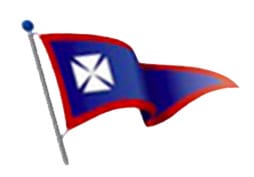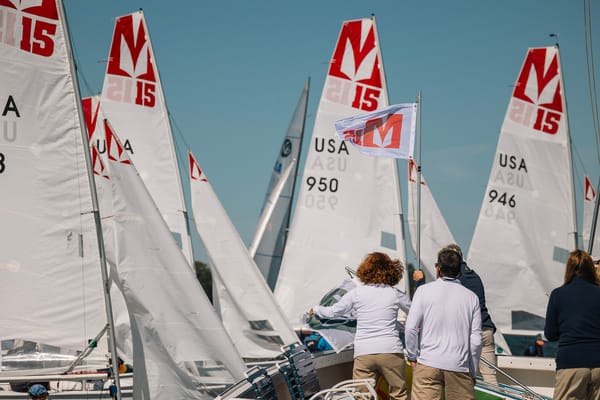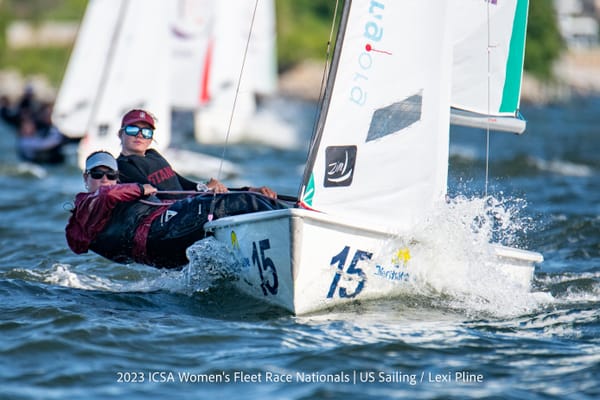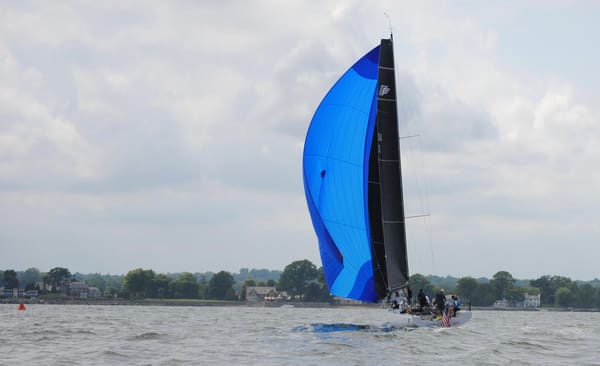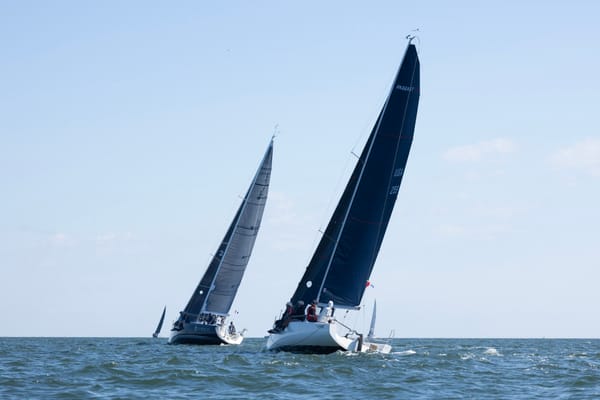Interview with Carina Becker
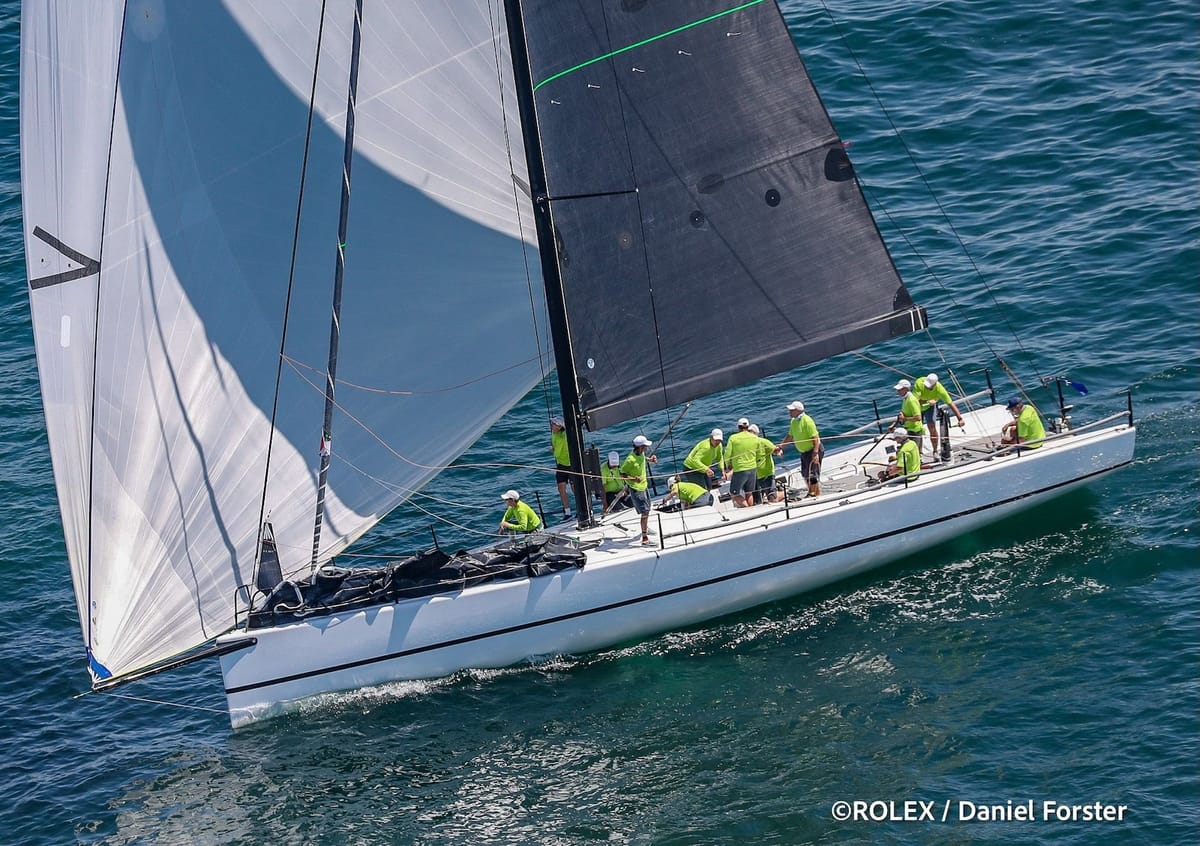
When you try to imagine the life of a professional sailor, what do you picture? Long stretches of time riding an ocean swell? Moments of fast action crossing a super-maxi at the start of the Sydney-Hobart? While the job differs depending on the boat and program, we took a peek into the life of a professional sailor by catching up with AYC member Carina Becker (note: Bell 42 also recently covered the double-handed Bermuda return race she did with her father, Peter).
Carina is a professional sailor helping manage and race PROSPECTOR, a TP52 (Transpac 52) that races with 13 people. The boat is a racing machine, 52 feet long with carbon hulls, honeycomb cores, and carbon fiber masts. Owners hire their own builders and designers but the boats all conform with a "box rule" that sets things like length, beam, displacement, draft and sail area.
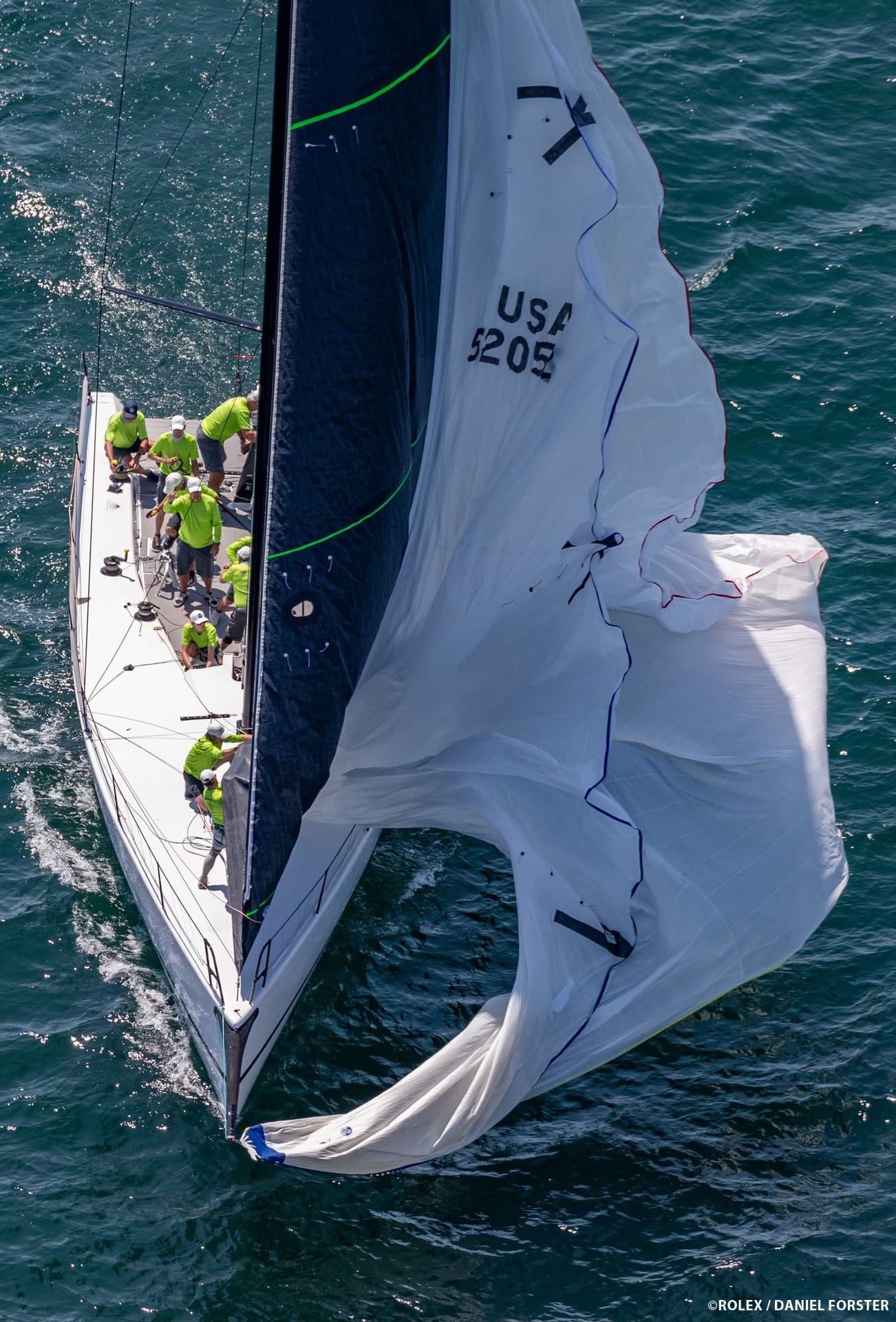
As a youth, Carina sailed dinghies in the JAYC program and sailed in college at Boston University, but she was constantly ducking away to chase her real passion of working on big boats. “I like the team aspect and I really like maneuvers,” she said. “I love a good douse or set, or in distance racing figuring out how many sail changes we can do. Everyone holds so much accountability and you have to hold up your end of the job, while sharing a common goal.”
When Carina first got connected to the PROSPECTOR program, she was partway through college. The owners, Larry Landry and Paul McDowell, at the time had a Mills 68 and were doing a lot more distance racing. The crew had sailed around the world and done classic regattas like Fastnet, the Transatlantic, and Sydney-Hobart. Being in college, Carina was limited to more "local" events like Annapolis-Newport but it connected her with the program and this turned into her job when she graduated.
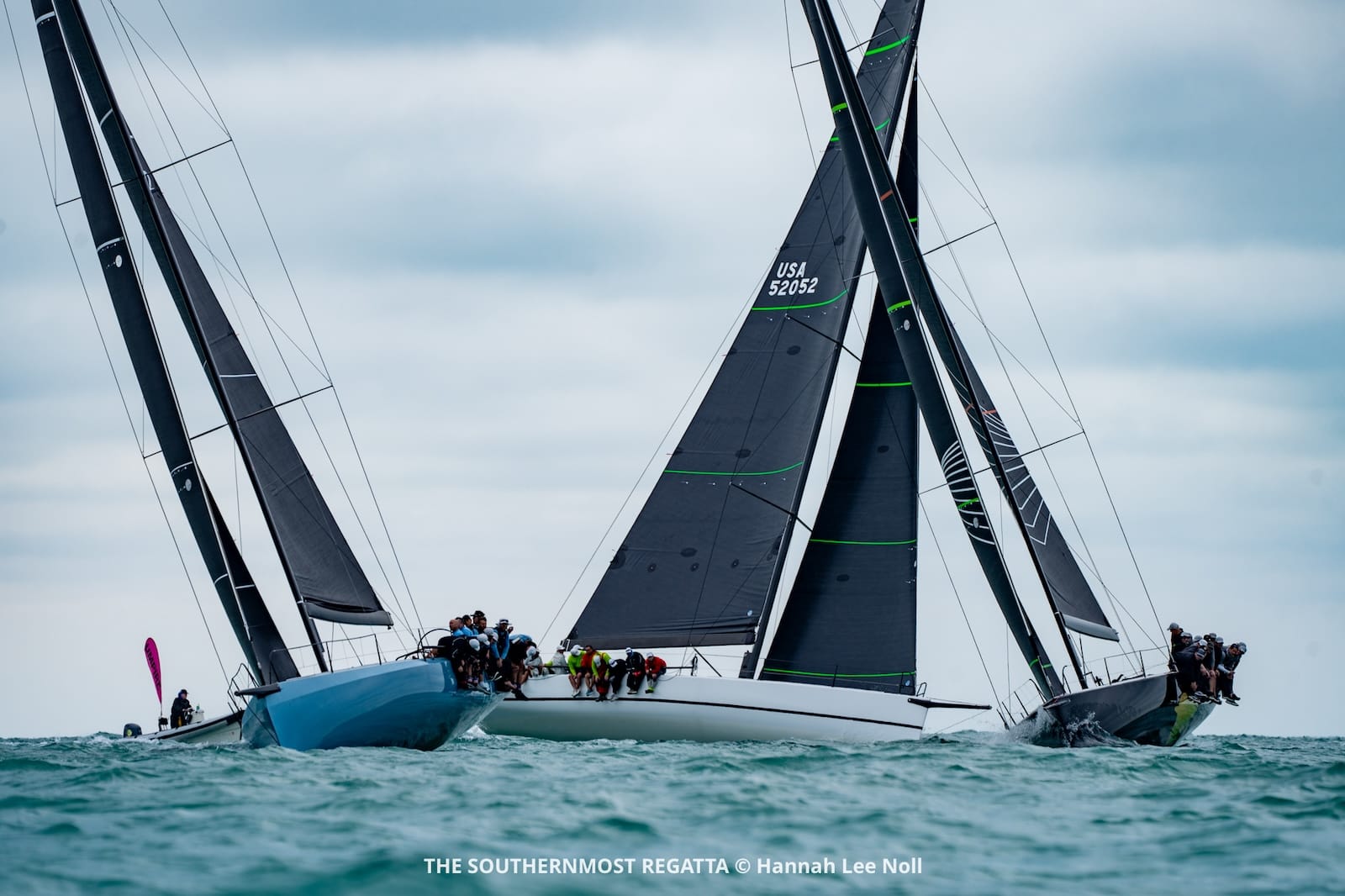
Carina’s role is in the pit, working with someone on bow and another in mid-bow. That said, even on their sailing days, she doesn’t just help race the boat. She manages the shore crew, the tender driver, and all the ancillary logistics thus allowing the boat captain to focus entirely on the boat itself. A remarkable amount of her life is spent helping manage the boat off the water.
“We’ll truck the boat down to Florida,” she said as an example, “And we’ll spend 3 weeks putting it together, then another week getting race-ready. We’ll be in the water for 7 to 10 days and then do another week of cleanup and then we’ll fly out again.” The Spring and Fall end up requiring a lot of time in the boat-yard. And that seemingly glamorous trip to the Caribbean? It’s actually a lot of time spent at the shipping port, crashing at night at an Airbnb.


But she continued, “I enjoy the yard. Working on the boat gives one an understanding of it as a sailor. There’s still things about the boat that I have yet to master but understanding everything means you're able to run down and fix something during a race. You can just go get it done. Our boat captain knows the boat like the back of his hand and is the 'eyes on it' person when there is a real problem, and I’m working to be as good as he is.”
As a professional sailor, she’s actually an independent contractor. Carina said, “I think the biggest part of working this kind of job is it’s a lot on you. Financially, you are running your own business. You have to hold yourself accountable and learn how to push yourself. It’s all on you to know how to schedule your day and solve problems. It could also be easy to plateau in the job. I work with people who will teach me, but I need to be the one asking questions.”
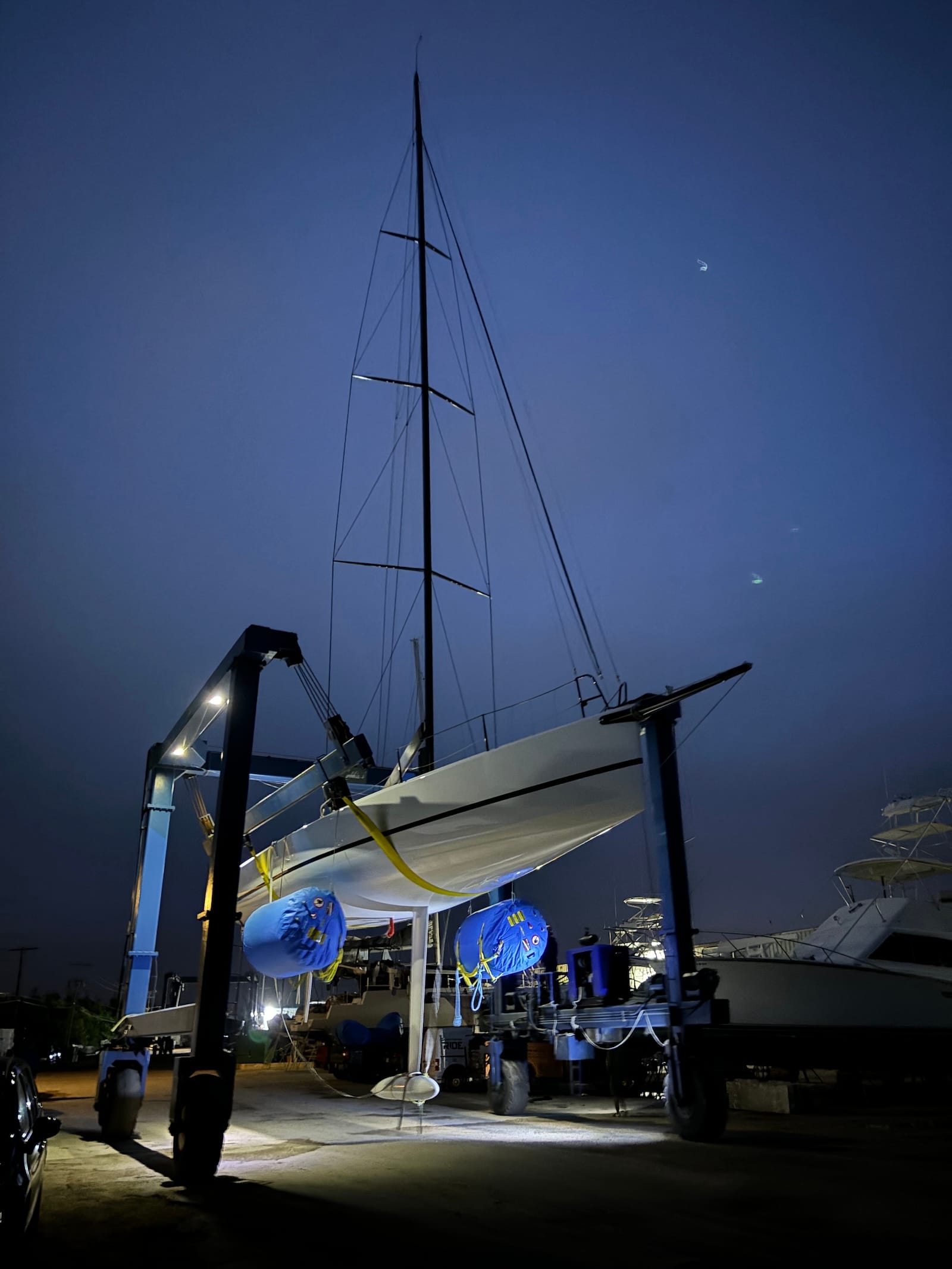
We asked Carina what it was like to take a different path from many of her friends from college. “I like it,” she said. “It’s hard work but it doesn’t feel like work. I really like how much knowledge there is to learn — it’s a fun industry to grow as a person.” It’s also not the kind of job where one can look ahead and always know your schedule. Intense work phases come in bursts. Carina might go through a stretch of 9-to-5 weekdays in the yard, but then need to work 20 days in a row for an event.
Reflecting on the TP52 class, Carina said, “They are really cool boats that have been fine tuned and designed to be really competitive. But at the end of the day I think the best part of racing them is the depth of the fleet. When we race we often race against all-pro teams and we’re a pro-am team. We’re going against some of the best sailors in the world and our goal is to be competitive. We’re still working towards it. January was first time sailing against a very competitive fleet. Each event we’ve made big strides.”
Thank you Carina for giving us a look into your world, and we wish PROSPECTOR great results in 2025! You can learn more about the GL52 racing class on their website or read the history of the class on the TP52 website.

